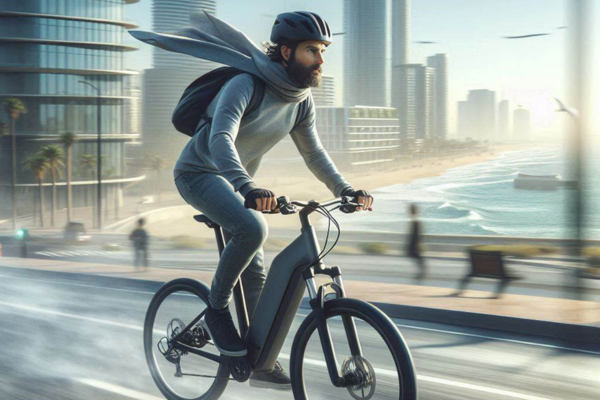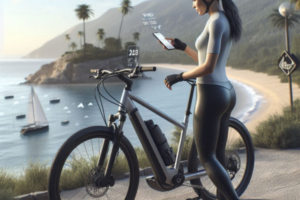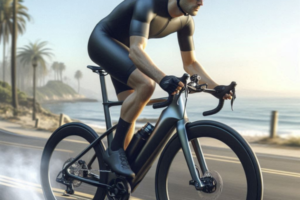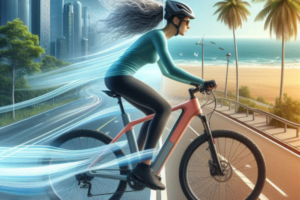🌬️ Why Wind Is a Critical Factor in E-Bike Safety
Electric bicycles have become a practical and eco-friendly transportation solution, but their safety on the road is directly influenced by aerodynamic forces — especially wind. Due to their relatively light frame and upright rider posture, e-bikes are more susceptible to sudden gusts and crosswinds.
Understanding how wind interacts with your bike can help you anticipate instability and take preventive measures that reduce risk while riding. In addition to aerodynamic considerations, weather conditions such as wind speed, direction, and frequency must also be taken into account for riders to maintain safe control over their e-bikes.
🌀 How Wind Affects Balance and Control
💨 Crosswinds and Lateral Movement
When wind hits the side of the rider or the bicycle, it creates a lateral force that can push the bike off its intended line. This is particularly dangerous when riding on bridges, open roads, or in coastal areas. Crosswinds are unpredictable and can change direction, sometimes causing a sudden push to one side, which can make it harder to maintain a straight path.
Experienced riders often adjust their body position, leaning slightly into the wind to counteract its force. Additionally, adjusting the bike’s handlebars to align with the wind direction can help regain control. Maintaining a firm grip on the handlebars while keeping your body relaxed helps minimize sudden shifts. On wide roads or when riding at high speeds, crosswinds can feel even more intense, so it’s important to remain alert and adjust your posture and speed accordingly.
🪁 Headwinds and Speed Loss
Riding against strong headwinds not only slows you down but increases motor strain and battery consumption. The bike becomes harder to control, especially when climbing or braking. The rider’s energy is also depleted more quickly, which can affect overall ride quality.
In addition to reducing speed, strong headwinds can also make handling more difficult. E-bike riders often experience the sensation of being pushed back, particularly at higher speeds. It’s crucial to adjust your riding technique by lowering your body position and reducing speed to avoid losing control.
🏎️ Tailwinds and Overcompensation
While tailwinds might seem like an advantage, they can cause the rider to overestimate their control at higher speeds. Sudden braking or maneuvering under tailwind influence may lead to loss of stability. The increased speed can make it harder to react quickly if something goes wrong, such as encountering an obstacle or unexpected change in terrain.
Riders should be mindful of how tailwinds influence their control, especially when navigating turns or slowing down. Maintaining awareness and a steady, controlled grip is essential to avoid overcompensating and losing balance.
⚖️ Factors That Increase Wind Sensitivity
🧍♀️ Rider Posture
Upright riding positions create more frontal area, making the rider more vulnerable to wind drag and side gusts. Lower, compact positions reduce this effect and improve control. Bending your elbows and slightly lowering your torso helps reduce wind exposure and keeps the bike stable in windy conditions.
🛞 Wheel Size and Design
Wider tires and deep-section rims catch more wind, especially in crosswind situations. Lightweight wheels may wobble more easily, affecting overall stability. To improve handling, riders can opt for narrower tires and wheels with lower profiles, which are less affected by wind resistance.
🎒 Accessories and Gear
Rear racks, baskets, panniers, and even loose-fitting clothing can act as wind catchers. These elements increase drag and affect the bike’s aerodynamic balance. Opting for sleek, aerodynamic accessories or minimizing extra baggage can help reduce wind resistance and improve overall bike handling.
🛠️ Practical Tips to Stay Stable in Windy Conditions
🔧 Adjust Riding Position
Lean slightly forward and keep your arms relaxed but firm on the handlebars. Tuck elbows in to reduce frontal area and improve balance. This posture allows you to react quicker to sudden gusts, and keeps the bike stable during crosswinds.
🌳 Use Environmental Wind Breaks
Ride closer to walls, tree lines, or parked cars on windy days to reduce crosswind exposure. Stay alert near open areas like highways and hilltops, where wind tends to be stronger. If possible, seek routes with more natural barriers to limit wind exposure.
🧳 Pack Smart and Symmetrical
Distribute the weight of bags evenly and secure them close to the frame. Avoid tall or wide attachments that disrupt airflow. Keeping weight balanced on both sides helps maintain stability and reduces the impact of wind on the bike’s handling.
🚨 Recognizing Dangerous Wind Situations
🌪️ Sudden Gusts on Open Roads
Be cautious when exiting tunnels, tree-covered paths, or city streets into open areas. These transitions often bring sudden gusts that can surprise even experienced riders. Riders should reduce speed and maintain a firm grip on the handlebars when entering these areas.
🌉 Bridges and Coastal Roads
These areas are often elevated and exposed, increasing the risk of lateral wind bursts. Slow down and keep both hands firmly on the bars. If the wind feels particularly strong, find a sheltered area to pause and reassess the wind conditions before continuing.
🌩️ Riding During or After Storms
Storms can leave irregular wind patterns. Avoid riding during extreme weather and allow time for conditions to stabilize after rainfall or windstorms. If you must ride, be extra cautious and slow down, as gusts and changing winds can make riding dangerous.
🧠 Final Thoughts: Awareness Leads to Safer Rides
Wind is an invisible but powerful force that affects the aerodynamics and safety of electric bicycles. By understanding how different types of wind interact with your bike — and by adopting smart habits and setups — you can maintain better control and prevent unnecessary accidents.
What’s your go-to strategy when riding in windy conditions? Share it in the comments!



